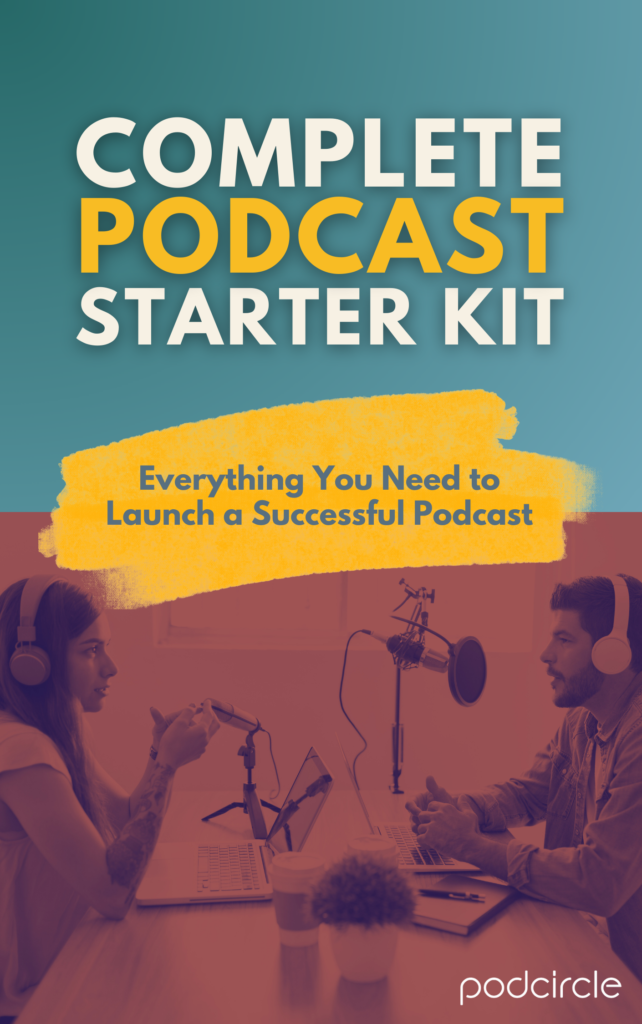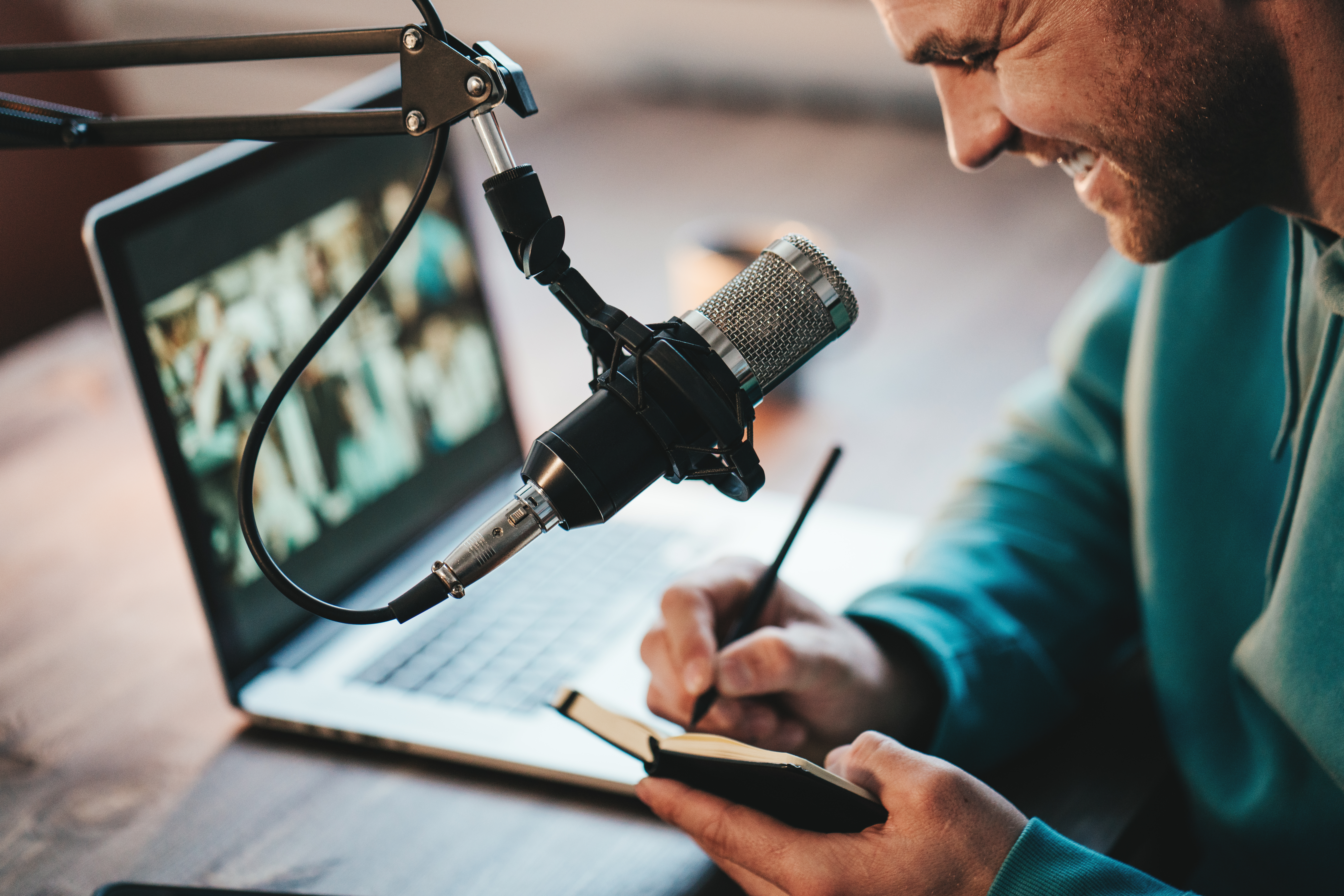Disclosure: We only endorse products and services that we’ve personally used or come highly recommended by trusted sources. As an Amazon Associate I earn from qualifying purchases. If you grab anything we mention, we may get a small commission. However, there’s not extra cost to you.
Between the growth of short-form video on social media and Spotify rolling out the in-app video, it’s clear to us that video podcasts are the way of the future.
But we also know that video podcasts can feel very intimidating, especially if you’re new to podcasting or used to only recording audio.
In this article, we’ll help you answer the all-important question: “Should I start a video podcast?” And if you decide the answer is yes, we’ll also share some simple tips to help you get started without burning out or sacrificing a consistent release schedule.
Is video podcasting really the future?
Podcasting used to be all about audio, but that’s just not the case anymore. Whether they’re watching full episodes on YouTube or engaging with short clips on social media, listeners are consuming more podcast video content than ever before. With these trends in mind, we think most podcasters can benefit from a video podcast.
With one major caveat: If you’re waiting to launch a new show or struggling to release consistent episodes, the last thing you want to do is add one more thing to your plate.
An audio-only podcast is better than no podcast at all, so don’t be afraid to start with what feels manageable for you and expand to video when you’re ready. But we always recommend recording video along with audio as much as possible to be used now for social posts or a video podcast down the road!
3 compelling reasons to consider starting a video podcast
1. Many listeners want video
46% of all podcast listeners say they prefer listening to podcasts with video, because they want to “see facial expressions and reactions” and because it helps them “better focus on the podcast.”
Why limit your listenership only to people who prefer audio when you could instead reach a whole new audience?
2. It doesn’t take much to get started
You don’t need to overthink it when you’re just getting started. Tools like Riverside (our preferred platform for remote recordings) make it incredibly easy to record video along with your episodes.
And if you’re recording in person, don’t be afraid to just set up your iPhone and hit record. You can always upgrade your equipment when you’re ready, but any quality of video is better than nothing at all!
We also recommend starting to record video now, even if you don’t feel ready to release it yet. That way, if you decide to start posting videos in the future, you’ll already have a backlog.
3. Video can help you reach new listeners
You may not realize it, but YouTube is one of the largest search engines in the world. When you publish videos on YouTube, you’re giving the algorithms a chance to work for you, putting your episodes in the feeds of people who will want to hear them.
And once again, remember that something is better than nothing! If you’re not yet prepared to post full videos, start small by sharing short clips as YouTube Shorts.
Want to see an example of how we’ve made YouTube work for us? Check out the Podcircle channel on YouTube for full episode recordings and bite-sized clips.
How to get started with video podcasting
With all this information in mind, the question is not “Should I start a video podcast?” but rather “When should I start?”
But what do you actually need to know to get started?
Here are a few of the top tips we’ve found most effective when releasing video for Podcircle and for our clients’ podcasts:
Use the technology you have, then upgrade when you’re ready. It’s totally fine to start recording with just your phone or computer. But when you’re looking to invest in higher quality video, make sure to check out this episode about the recording equipment we recommend:
Keep your branding consistent. Video gives you a great opportunity to build your visual identity. This can be as simple as putting your logo in the corner of your Instagram Reels and using consistent colors and fonts. By creating videos that look consistent, you’ll help people start to recognize your brand while they’re scrolling through their feeds.
Use subtitles for accessibility. YouTube and other social media platforms have made it easier than ever to add captions or subtitles to videos. This is important for accessibility, but it also helps you engage people no matter where they are. Say, for example, someone’s scrolling through Instagram in public and just wants to read the captions instead of playing audio — it happens more than you might expect! In fact a recent report from Verizon Media in a survey of U.S. consumers found that 92% of people view videos with the sound off on mobile.
Recycle content across multiple platforms. The great thing about video clips is that they’re extremely versatile. YouTube, Instagram, Facebook, TikTok, and even LinkedIn all allow you to share short clips, so don’t be afraid to promote wherever you have a presence.
Ready to dip your toes into video content? We’re here to help!
Video podcasts feel much less intimidating when you realize you don’t have to do it all on your own.
In fact, our team here at Podcircle offers free strategic discovery calls where we can dig into the tactics and techniques that will help you reach your ideal listener and achieve your podcasting goals. Book yours today at this link!
And if you’re ready to outsource parts of your podcast so you can focus on being the best possible host, we can help with that, too! Head to our services page to learn how we can take editing, marketing, production, or even video off your plate.
Whatever you need to take your podcast to the next level, know that the Podcircle team is here for you! We also share plenty of practical information in our weekly podcast episodes, so make sure to follow the show for more content like this.
Before you go! Download our Complete Podcast Starter Kit.
It includes:
✅ Podcircle’s Essential Equipment Guide
✅ The Ultimate Podcast Launch Checklist
✅ Content Calendar Template formatted for Google Sheets
✅ Remote Interview Preparation Pack
✅ 8 Tips to Improve Your Interviews PDF
✅ Three Steps to Writing a Compelling Podcast Show Description



